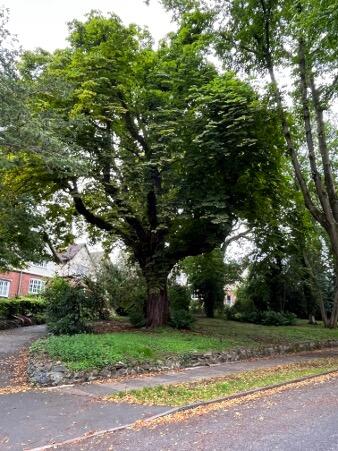Wow, you’ve found it. This Horse Chestnut tree can grow up to the height of around 40m and can live for up to 300 years. The bark is smooth and pinky-grey when young, which darkens and develops scaly plates with age. Twigs are hairless and stout; buds are oval, dark red, shiny and sticky.
FACT – Horse chestnut is native to the Balkan Peninsula. It was first introduced to the UK from Turkey in the late 16th century and widely planted. Though rarely found in woodland, it is a common sight in parks, gardens, streets and on village greens.
The flowers provide a rich source of nectar and pollen for insects, particularly bees. Caterpillars of the triangle moth feed on its leaves, as does the horse chestnut leaf-miner moth whose caterpillars provide food for blue tits. Therefore this tree needs to be looked after as it is vital for the wildlife at Moor Pool. This tree is even a favourite of one of our Trustees at Moor Pool so is particularly special.
Quiz Question:
What do Horse Chestnut trees provide in autumn?
- Conkers
- Oranges
- Flowers

Now time to move onto a very rare tree located at the very end of Carless Avenue. As you walk up please look out for any more spectacular trees you think we could add to our collection on the trail.


